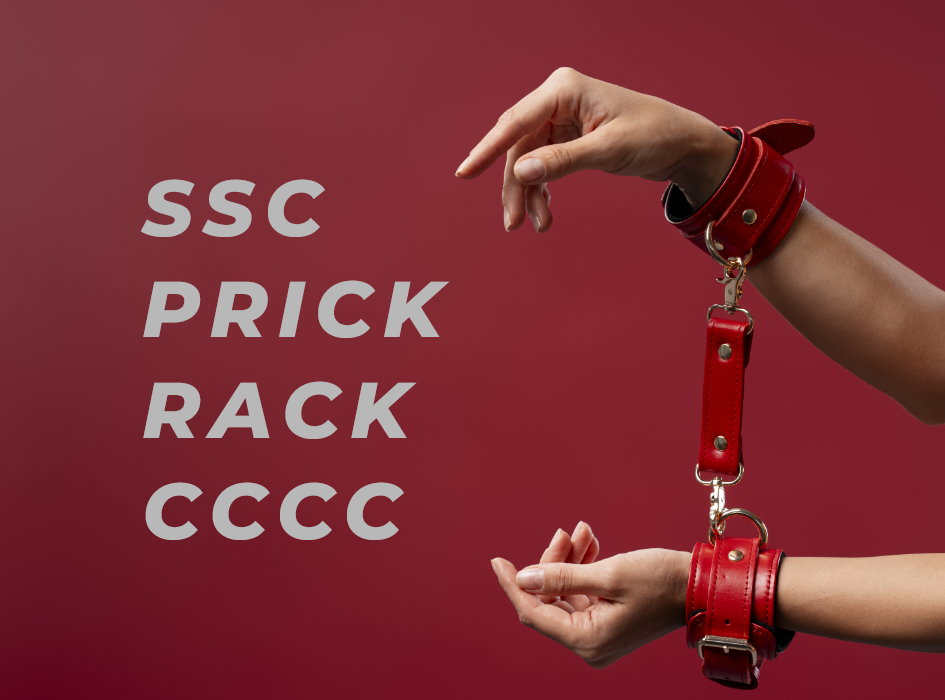When people think of BDSM, their minds often jump straight to sex. But BDSM isn’t always about sexual activities—it can also be purely about power, control, and connection. Non-sexual BDSM is a fascinating way for people to explore dynamics without involving physical intimacy, making it appealing to those who enjoy the emotional and psychological aspects of kink.
Let’s dive into the world of non-sexual BDSM and explore how it works, why people love it, and what makes it so unique.
What Is Non-Sexual BDSM?
Non-sexual BDSM focuses on the exchange of power, trust, and roles between partners, without any sexual acts. It’s about creating and exploring dynamics like dominance, submission, and control purely on an emotional, mental, or logistical level.
Examples of Non-Sexual BDSM:
- A submissive following a dominant’s daily instructions.
- Engaging in protocols like kneeling, addressing someone as “Sir” or “Ma’am,” or asking permission for decisions.
- Participating in service-oriented tasks like cooking, cleaning, or organizing.
- Exploring control through contracts or routines.
Why Do People Enjoy Non-Sexual BDSM?
For many, the thrill of BDSM comes from the mental and emotional aspects, not necessarily physical intimacy. Here are some reasons why people enjoy non-sexual BDSM:
1. The Power Exchange
The exchange of power can create a deep sense of trust and connection between partners. It’s about giving and receiving control in a consensual and structured way.
2. Emotional Fulfillment
Non-sexual BDSM can be deeply rewarding emotionally. For example, a submissive might feel fulfilled by serving their dominant, while the dominant enjoys guiding and nurturing their partner.
3. Building Trust
Without the distraction of sexual elements, non-sexual BDSM allows partners to focus on trust, communication, and understanding each other’s boundaries.
4. Creative Exploration
Non-sexual dynamics can be incredibly imaginative. From role-playing as a teacher and student to running a 24/7 power exchange dynamic, the possibilities are endless.
How Does Non-Sexual BDSM Work?
Non-sexual BDSM still requires the same core principles as any other kink dynamic: consent, communication, and trust. Here’s how it can be structured:
1. Establish Roles
Decide on the roles each partner will take. Will one person be the dominant, setting rules and providing guidance? Or will the relationship involve switching roles?
2. Create Rules and Protocols
Set clear expectations and boundaries. This could include things like:
- Daily rituals (e.g., sending a “Good morning” message).
- Rules about decision-making (e.g., asking permission to spend money).
- Specific tasks (e.g., preparing meals or organizing a workspace).
3. Use Contracts or Agreements
Some people like to create a formal agreement outlining the rules, responsibilities, and limits of the dynamic.
4. Focus on Communication
Non-sexual BDSM thrives on open, honest communication. Regular check-ins help ensure that both partners are happy and comfortable.
Types of Non-Sexual BDSM Dynamics
1. Service Submission
In this dynamic, the submissive focuses on serving the dominant in practical ways, like completing chores, running errands, or helping with tasks.
Why It’s Appealing:
- The submissive finds fulfillment in being useful and appreciated.
- The dominant enjoys the sense of order and support.
2. Mental Domination
Mental domination involves control over thoughts, emotions, or decision-making, rather than physical acts.
Examples:
- The dominant assigning tasks or setting goals.
- Enforcing routines, like bedtime or diet rules.
Why It’s Appealing:
- It’s about the psychological thrill of being in control or guided.
3. Role-Playing Dynamics
Non-sexual BDSM often involves imaginative role-play. Partners might take on roles like teacher and student, boss and employee, or even fictional characters.
Why It’s Appealing:
- It lets people step into new personas and explore different sides of themselves.
4. Lifestyle Dominance and Submission
This involves integrating power dynamics into everyday life. A dominant might oversee a submissive’s schedule, decisions, or routines on an ongoing basis.
Why It’s Appealing:
- It creates a constant sense of structure and connection.
Is Non-Sexual BDSM for You?
Non-sexual BDSM isn’t for everyone, but it can be incredibly rewarding for those who enjoy power dynamics, trust-building, and emotional connection. If you’re considering exploring it:
- Start Slow: Try small rituals or tasks to see how it feels.
- Communicate Openly: Discuss expectations and boundaries with your partner.
- Educate Yourself: Learn about non-sexual BDSM through books, forums, or workshops.
The Bottom Line
BDSM doesn’t have to involve sex to be fulfilling. Non-sexual BDSM focuses on the power, trust, and emotional connection that make kink so unique. Whether it’s about following protocols, completing tasks, or creating imaginative role-plays, non-sexual BDSM offers endless possibilities for exploration and growth.
As with all BDSM, the key to success lies in communication, consent, and mutual respect. So, if you’re curious, take the leap—you might discover a whole new world of connection and fulfillment.
Related posts
-
Acronyms of BDSM : A Look at SSC, RACK, PRICK and CCCC
BDSM acronyms have emerged and been debated over a time as away to protect BDSM......
-
Is It Common to Lose an Erection When Wearing a Condom?
Have you ever been ready to go, but lost your erection when putting on a......
-
Is the Idea of a Cuckquean Rooted in Myth or Real-life Practices?
A cuckquean is a woman whose husband is unfaithful, often with her knowledge and sometimes......


